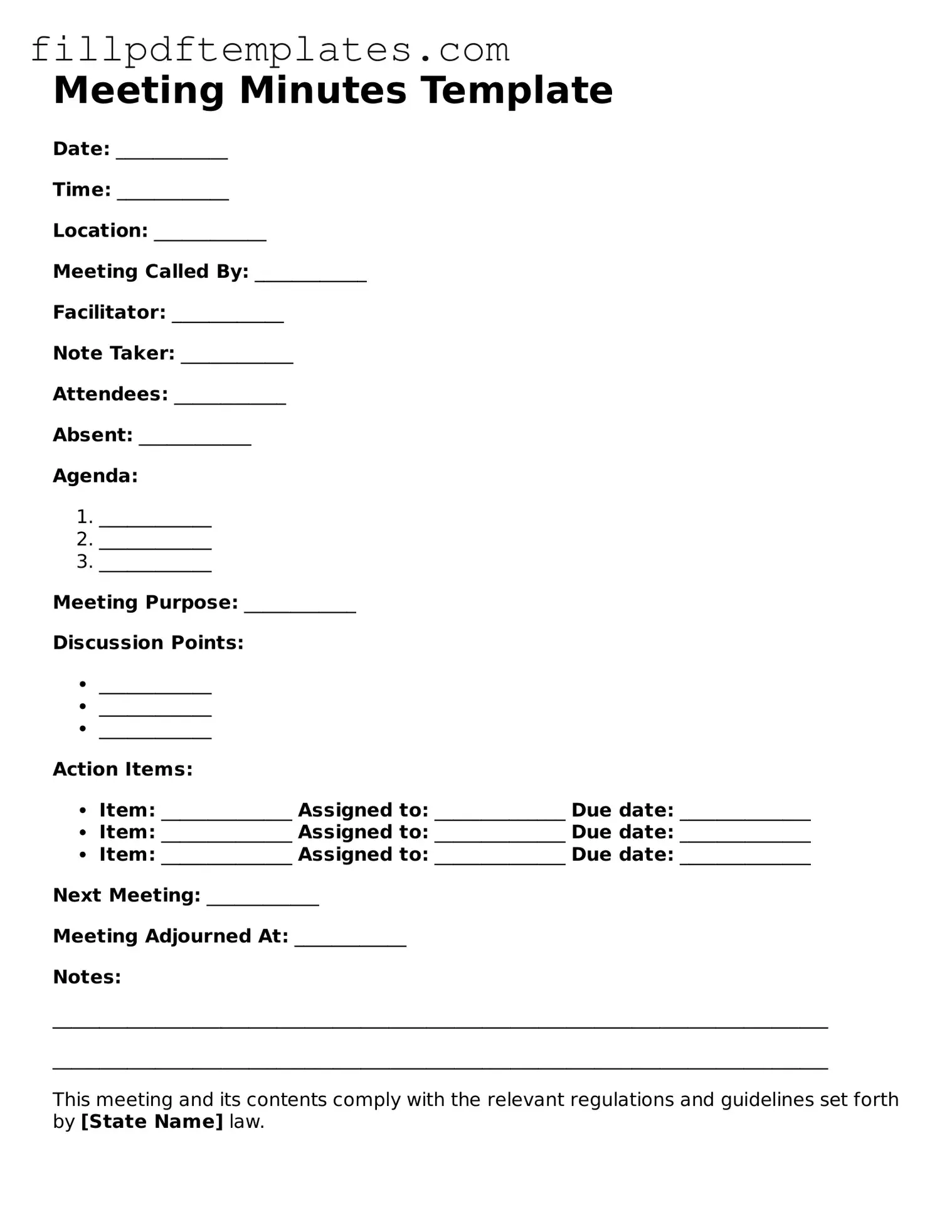Meeting Minutes Template
Date: ____________
Time: ____________
Location: ____________
Meeting Called By: ____________
Facilitator: ____________
Note Taker: ____________
Attendees: ____________
Absent: ____________
Agenda:
- ____________
- ____________
- ____________
Meeting Purpose: ____________
Discussion Points:
- ____________
- ____________
- ____________
Action Items:
- Item: ______________ Assigned to: ______________ Due date: ______________
- Item: ______________ Assigned to: ______________ Due date: ______________
- Item: ______________ Assigned to: ______________ Due date: ______________
Next Meeting: ____________
Meeting Adjourned At: ____________
Notes:
___________________________________________________________________________________
___________________________________________________________________________________
This meeting and its contents comply with the relevant regulations and guidelines set forth by [State Name] law.
